
RADICAL IS BEAUTIFUL
Studies have been done about the hardships that Black female entrepreneurs face. The proposed solutions are literally steeped in capitalism & white supremacy.–Althea Branton
The post Finding Your Way Home appeared first on LiisBeth.
]]>As a child, Toronto-born Keda Edwards Pierre wanted to do something many intelligent, artistic kids dream of doing; create buildings.
“In elementary school, I wanted to be an architect. I was recognized to be very creative. My grandfather was an architect,” says Edwards Pierre. “Plus, lines and structure really attracted me.”
However, the universe had other plans. Instead, Edwards Pierre a childhood trauma survivor, navigated a career path that met her profound needs for safety, structure, answers, voice and ability to advocate for others. That path would take her from student to frontline police officer, to community liaison officer and, finally, to entrepreneur –a journey which, for her, is ultimately “true to soul”.
“Bad things happened in my life. The impact showed up in a number of ways.
In Grade 10, my typically good grades suddenly started to plummet– I saw my dreams of architecture (school) go down the tubes,” Edwards Pierre explains. “I often found escape through arts. During this time, I increasingly turned my attention to theatre and drama and ended up getting a lead part in the school play.
Edwards Pierre says she was excited about new emerging theatrical success–until playing the lead part meant having to kiss a boy on stage– an idea that made her so ill and uneasy that she gave up theatre for a time. Panning around for a new direction–one that would allow her to feel more empowered – Edwards Pierre turned her attention to law, a career which matched her passion for “advocacy, helping people and argumentative nature”.
“I developed a keen interest in the justice system. It led me to take a paralegal course in college after high school,” says Edwards Pierre. “Then one day, my class visited a courthouse to observe court proceedings, after which two classmates and I met two off-duty court officers. We later hung out. One of them advised that police were hiring and suggested that I join as a better path to law school than the paralegal path.
“I did some research and realized he was right.”
Sold on the idea, Edwards Pierre applied for a job with Toronto police, a much bigger feat than such a short sentence implies. This was the 1990’s a time when only 6% of Toronto Police were women, let alone women of colour like Edwards Pierre, and although some things have changed since then, even today policing in Canada is still overwhelmingly white male dominated.
“I had never seen a Black woman in uniform,” says Edwards Pierre. “Plus I was considered short, just five foot five (inches), but I applied and was accepted. There were approximately 150 Toronto recruits and approximately 20 were women. I was the only Black woman.”
Over the next 27 years, Edwards Pierre would go on to hold a variety of roles with the Toronto Police Service (TPS), including court officer, parking enforcement, and eventually, a first class police officer across the city, including 42 Division which serves Scarborough, a suburb on the edge of Toronto where 73% of the population are non-white and the majority of residents are newcomers.
Edwards Pierre at one point, went on maternity leave.
Around the same time, “After a nearly 10 years with TPS, I remembered my earlier law aspirations. I applied to the Weldon Law School at Dalhousie (University)–and got in!” says Edwards Pierre. “So, at 28, while on maternity leave, I packed up my still breast-feeding baby and went to Halifax to get my law degree.”
Turned out that being a single mother, alone in a city with no family, little money for food and with a baby who had health issues, and pursuing my law degree was too much. After one year, I packed up, returned to Toronto and my baby’s medical specialists. I completed first-year law remotely and returned from leave to police work.”
Perspectives on Police Work
As a child, Edwards Pierre says her interactions with police while growing up were not negative.
Once on the inside, however, Edwards Pierre saw things that deeply troubled her.
“I witnessed how trauma impacts human potential and can destroy lives,” she says. “I saw the institutional flaws and systemic challenges that prevent police from dealing with issues in helpful ways. ‘Bad cops’ remain protected and fly under the radar and ‘good cops’ get gutted, chewed up and spat out.”
“While on the job, various misogynistic and racist officers in the ranks, management and command kept me in hyper-vigilance mode for much of my career – so I was in constant fight or flight positioning. Sometimes I won the battles I fought – and sometimes I lost miserably.”
Edwards Pierre adds “The system is far, far from perfect–however, there are good things happening between the cracks. While working in 42 division, I saw myself as part of the community. I had a great partner who loved his job.” Edwards Pierre saw how deeply connected, community-supported policing and strong community ties resulted in positive outcomes.
Despite the growing societal concerns around racism and police violence, Edwards Pierre held on to the idea that the institution could change for the better and went on to become a Corporate Liaison Officer for three years with a focus on improving Black community-police relations. “I coordinated the first month-long Black History Month celebration while in that role. I consulted with and brought community organizations and institutions together from all over the city for the first time. I also coordinated the United Mothers Opposing Violence Everywhere (U.M.O.V.E), a nonprofit which advocated for stronger gun control after the 2005 “Summer of the Gun”.
Edwards Pierre was also a founding member of the TPS Black Internal Support Network.
“I believe I had a positive impact, but over time, I realized there was only so much I could do.”
Edwards Pierre retired in 2020.
“My experience in policing, good, bad and even the ugly. was part of my path. It opened my eyes and showed me what I needed to see,” she says. “It prepared me for what I believe is the work I am now called to do.
For so many years, I hid a scared girl behind a fierce advocate for others. It felt easier to scream for others than myself.”
Keda Edwards Pierre, founder of True2Soul Tweet

Enter True2Soul
“Something like seventy percent of us have been traumatized in one way or another. There are up to 19 different recognized areas of trauma. So if we are looking at that, and looking at how messed up our systems are, we have a lot of people inside and outside institutions who have unresolved shit and therefore, can and do perpetrate harm. Through my own lived experience, I have learned people have to heal themselves before they can heal systems.
Today, I feel I am called to work with healing people”.
So, Edwards Pierre started a company.
True2Soul is a hybrid, digital platform-style enterprise that offers safe & inclusive workshops for Black women and gender diverse folks who have experienced sexual trauma. Clients are looking to heal, be part of a discrete, supportive community, and ultimately transform their lives, relationships and career prospects.
True2Soul also creates customized treatment plans, and curates a directory of trauma-informed and allied services—all reviewed, researched and vetted by Edwards Pierre and her small team.
Their signature 12-week Chrysalis Program which launches in May, is supported by a suite of Canadian and international program delivery collaborators.
“We offer a multidisciplinary, non-judgement-based approach” says Edwards Pierre, “but what really makes our work stand out is the fact that our program is informed by lived experience few other folks have.
I have had to learn how to cope and deal with my own complex trauma, and know the flaws of the system. My personal experience and what I have witnessed in policing-both on the street and within the institution–have provided me with a deep understanding of what’s lacking and even harmful for survivors in the way of support”.
Edwards Pierre adds “I have also been supporting sexual trauma survivors for years. I’ve trained as a certified holistic health and mindfulness specialist, life coach and trauma recovery coach. I am also an ordained Minister.
While Edwards Pierre is new to entrepreneurship and venture building, she is optimistic that with the help of programs like Fifth Wave, she will figure it out.
As we end the interview, Edwards Pierre takes a slow sip of her iced tea, puts down her cup, and rolls up her sleeves to reveal matching forearm-length tattoos on both arms.
“These tattoos remind me to be true to the essence of who we are. They anchor me when I feel offside.
The bottom line. I am committed to building out True2Soul. This is who I am. I know this is where I am supposed to be. There are just not a lot of therapists out there doing this work who have also been in policing. And I know the word “police” is a powerful trigger for many people. But I also know that what I have learned, on the inside, in the streets, is unique, authentic, real and therefore, powerful.”
Publishers Note: True2Soul participated in the Fifth Wave Initiative, a year-round program offered by CFC Media Lab and its partners to support the growth and development of women entrepreneurs in the digital media and commerce sector in southern Ontario. All enterprise founders in the Fifth Wave community are selected for both their potential and commitment to weaving intersectional feminist ideals of equity and fairness into sustainable and scalable business growth strategies. Fifth Wave Initiative is committed to a minimum of 50% participation per cohort by members of underrepresented groups. The Fifth Wave is a LiisBeth ally sponsor at the Lighthouse level.

Studies have been done about the hardships that Black female entrepreneurs face. The proposed solutions are literally steeped in capitalism & white supremacy.–Althea Branton

Madeleine Shaw’s survey and life experience tells us what separates social entrepreneurs from the rest.

What’s more fun than smashing through barriers to be a Black woman in tech? For Takara Small, it’s helping kids smash through them too.
The post Finding Your Way Home appeared first on LiisBeth.
]]>The post Breaking Up With Patriarchy in Film and TV appeared first on LiisBeth.
]]>
British filmmaker Amma Asante once said: “Don’t take no as a full stop, treat it like a comma.” Three women indie filmmakers (Bonnie Anderson, Moxie Productions; Rabiya Mansoor and Shreya Patel, Window Dreams Productions) are doing just that. These filmmakers aren’t asking for a seat at patriarchy’s table. They’re building a better one on their own.
Film has always been a brutal industry for everyone but women bear a disproportionate brunt of the pain. A 2021 report by Women in View found women were afforded significantly fewer film contracts than men by two major funders and far less funding. BIPOC women fared the worst. A story in World Economic Forum in March reported that while the MeToo movement uncovered gender power dynamics in Hollywood, inequities behind the scenes garnered less attention: fewer than 20% of directors and writers of the 250 highest-grossing U.S. movies were women (according to a recent study). It isn’t lack of education that holds women back – a 2018 report found equal representation of women in higher education in film and television.
Indie Film Making: The Road to Freedom?
While building one’s own company doesn’t make systemic oppression and challenges vanish, the autonomy that comes with going indie provides film makers with the freedom to produce content that matters to them, their way, and in ways that aligned with their feminist ideals. Moxie Productions’ Anderson recalled an incident where a male actor ignored her – even though she was director and producer, and looked to her male Director of Photography instead. She hasn’t hired him again. For the keepers though, she provides a work experience “I wasn’t finding in other places.” She loves hearing how working on her set is fun. “I want everybody to have that feeling when they’re on set because that’s when you get the best work done.”

For the co-CEOS at Window Dreams (below), going indie means you can put people and relationships first. “If there is no friendship, this doesn’t exist, and it’s not fun anymore,” Patel said.” “You don’t have to be lonely at the top.” The system pits marginalized creatives and producers (they are both of South Asian descent) against one another. There is often only one ‘diversity’ seat at the table. “Our mindset has always been, well, we’ll just build our own table or we’ll just make the table bigger,” Mansoor said. “There could be seats for everyone.”
Anderson took the leap into independent film making after years of industry experience that included lighting designer, theater director, playwright and actor. Technology has helped get hers and other women’s derrieres in seats. When cameras and lighting got smaller, and editing apps became available (“Film is really all created in the editing room”) she realized: “I’m tired of waiting for other people and I want to just create things for a living.” She learned how to edit through YouTube videos and appointments at Apple Genuis (“They were great”) to make her first film ‘GPS Love’: “A man falls in love with his new GPS and finds himself.”
Leveraging Technology, Global Networks and Diversity
Window Dreams has been busy during this pandemic. Learning to leverage new technology has helped. The Toronto-based Mansoor had wondered whether she would ever have the opportunity to be in a writers’ room with people from New York and Los Angeles. Then virtual meetings became the norm. Their documentary, ‘Unity’ (logline: “Love spreads faster than a virus”), had over 100 cast from almost 70 countries. While Patel slept, videos arrived from different time zones for her to edit when she woke up. ‘Unity’ was the closing film at the Unified Filmmakers-Munich International Film Festival last year. Their music video, ‘Freedom Dance,’ with Bollywood and other celebrities was directed virtually by Patel. It went viral and was reported in Rolling Stones India. “I’m retiring,” Patel joked. (She is obviously decades away from retirement!)
Anderson said that if she could change one thing to support the advancement of women, she would appoint more of them “To be head of where the money is.” The Women in View’s On Screen Report found women give other women more breaks. They refer, for example, to the ‘showrunner and producer effect’. When women occupy these positions, their teams have far greater representation of women in creative roles like writers, directors and cinematographers. When women of colour are the producers, the playing field for other women of colour is significantly more level.
A study done earlier this year, Building Inclusive Networks in the Film and Television Industry, found BIPOC women and non-binary individuals viewed networking events as vital to gaining industry access. Yet, most participants felt ‘unwelcome’ at industry events. Lack of diversity, micro-aggressions and cliquishness were some of the reasons cited. Participants felt greater inclusivity in networking opportunities would lead to positive outcomes: better programming for more accurate reflection of current reality; greater authenticity in the stories; fewer stereotypical or sexualized portrayals of women; on-screen reflection of the diversity of Canadians.
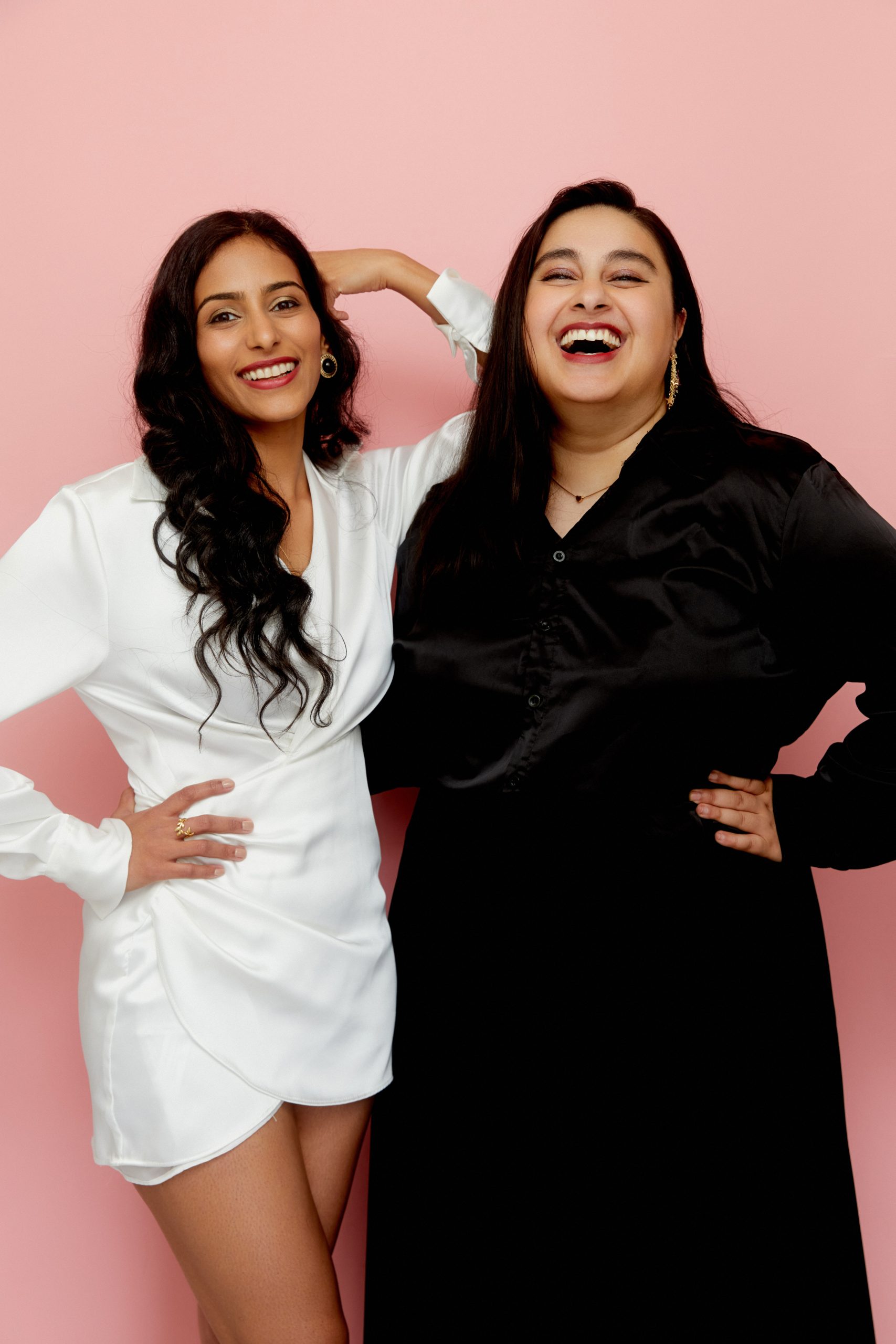
Even for Patel, with her expansive global network and a gift for networking and connecting – “That’s where my forte is when it comes to business” – access remains a challenge. Though there’s no lack of funding opportunities, finding them is a problem. Peers are generally tight-lipped for fear of competition. Mansoor and Patel feel funders need to promote these opportunities better, while supporting applicants to ensure strong submissions. They found out about the Bell Fund Slate Development Program late but hustled to submit their application. They got funding for several projects including the comedy series Layla is Relevant (which they also star in) about “A former child star and current nobody” who moves back to Sarnia (Patel’s hometown) with her single mom and gamer cousin.
No Money? Carry On!
Lack of funding never stopped these women from pushing ahead on their dream projects. Anderson had pursued funding before Moxie Productions without much success. She realized: “I’m going to create a production company and make money from it. And from that money, I’ll be able to create my own personal work that I want to do.” She has a thriving business in educational videos (For the purpose of training doctors and other professionals) and actor and musician promotional reels. This allows her to take financial risks that help other women like her improv partner Kate Ashby. “I Just thought Kate needed her own television show,” Anderson said. Talk with Kate Ashby was a talk show with a twist where prominent guests like actor Susan Coyne decided on the next guest (only revealed to Kate on camera). A new season of SNAK (four-minute lively interviews with celebrities like Sandra Shamas, Jean Yoon, Peter Mansbridge) is launching. “This is something that is dear to my heart and we celebrate Canadian talent,” Anderson said.
The women at Window Dreams pursue stories about social justice knowing their payday may be far off. Years ago, while Patel was doing humanitarian work in India, she watched helplessly as poor children were waiting to be treated for terminal illnesses. She knew documentary filmmaking could shine a light on marginalized people and create change. Window Dreams’ Girl Up about human trafficking in Canada took years to develop without funding. A feature film about domestic human trafficking is in the works.
Emerging Diversity, Inclusion and Equity Policies are Helping
There is reason for aspiring women indie filmmakers to be optimistic. Commitments to gender parity by publicly-funded organizations such as CBC, Canadian Media Fund, and the CRTC have increased the number of women directors in film and television. Mountains still need to be moved to increase representation of BIPOC women and all women in key industry roles like cinematography. However, women in film are increasingly leveraging the power of trust, connection and collective action. They are also helping each other out. They are helping each other out. Organizations such as Women in Film and Television (WIFT), Fem Script Lab, and Women in the Director’s Chair (WIDC) offer development and networking to support women’s advancement in the industry.
Anderson, Mansoor and Patel participated in the Canadian Film Centre Media Lab’s Fifth Wave Initiative, a development program that integrates intersectional feminist ideals with entrepreneurship. For Anderson it was “mind blowing” to be connected with women who were rooting for her success. The enthusiasm of mentors and others to make connections to help their business thrive was invaluable.
What’s their advice to help the next generation of women? Anderson would like everyone to see business differently. “It’s not sales; it’s building relationships.” Mansoor would tell them to have “The confidence to run with an idea, knowing there are wins and losses”. “Don’t give up,” Patel would advise. “Entrepreneurship is a long road.”
We can all help make that road a little smoother.
TIFF (September 8 – 18) has a category of films ‘Directed by Women’. These films deserve our support.
Publishers Note: The FitIn is a part of the Fifth Wave, a year-round program offered by CFC Media Lab and its partners to support the growth and development of women entrepreneurs in the digital media sector in southern Ontario. All enterprise founders in the Fifth Wave community are selected for both their potential and commitment toward weaving intersectional feminist ideals of equity and fairness into sustainable and scalable business growth strategies. Fifth Wave Initiative is committed to 30% participation by members of underrepresented groups. The Fifth Wave is a LiisBeth ally and content sponsor at the Lighthouse level. Applications for Cohort 5 are OPEN!

Meet three indie media mavericks who are challenging the patriarchal definition of journalism in Canada.

We analyzed five female-directed films at TIFF and explore the hidden lessons for feminist entrepreneurs.

The post Breaking Up With Patriarchy in Film and TV appeared first on LiisBeth.
]]>The post Hurtling Towards a Metaverse Future appeared first on LiisBeth.
]]>
“The frenzy was really unique,” Candice Houtekier said, recalling her first Collision technology conference in 2018. Houtekier had recently obtained a graduate degree in Art History and Video Games from the University of Montreal and was working at a contemporary art gallery. At the Collision conference she met tech-savvy entrepreneurs working at the intersection of art and blockchain technology. “It was avant-gardist,” the 29-year-old said.
“I remember thinking art fairs, art events and art organizations in general are really late,” she said, thinking back to how dated the arts world seemed compared to what she experienced at the Collision event. She wanted to change that. Six months after the conference she launched her own business. She had the perfect name: Art Collision.
Working at the Intersection of Art and Technology
Like many entrepreneurs Houtekier said “Yes to everything,” at the beginning. Her clients were independent artists, collectors and smaller arts organization wanting to improve their digital presence. She helped them with things such as website design and analytics.
“But with years, I learned what I’m good at, what I like to work on, and what is profitable for my business,” she said. While she still provides more routine technical support, there has been a seismic shift in her business in a short time. In 2020, virtual reality services were less than ten percent of revenue. A year later it jumped to almost twenty-five percent. More and more clients are from around the world.
While the overall value of NFT art has dropped precipitously recently, Houtekier maintained it is a sound longer-term investment for savvy art collectors. She gave the example of the American abstract expressionist painter Helen Frankenthaler. Someone who bought one of her paintings in the 1970s and flipped it two years later probably lost money. “But if you resold it forty years later, well you’re probably going to make a lot of money.” Houtekier helps her clients succeed in the world of NFTs. “I think the scene is a bit overwhelming because there is a lot of information, a lot of new vocabulary, and a lot of scammers,” she said. “I show to my clients how to enter the scene in a secure peaceful way.” This includes everything from how to open a crypto-wallet to minting an NFT to showcasing clients’ artwork in a metaverse where it can be exhibited “In a professional and beautiful way.”
Houtekier is a solopreneur with a strong team of collaborators like Brendon McNaughton, co-founder and CEO of Art Gate. She introduced herself to him at an art fair after noticing cynoculars in his hands. “Wow, what’s going on in your headset?” she asked. “Show me what you can do.”
Art Gate is a metaverse that leases space to art galleries to exhibit beyond their brick-and-mortar spaces. Imagine this: An art collector from anywhere can visit an art gallery thousands of miles away. They enter the Art Gate metaverse via their laptop or virtual reality headset. This gallery may be designed to look traditional with white walls or something completely outrageous. Similar to an in-person experience, there are even greeters and tour guides—sometimes these are bots. Art Collision and Art Gate collaborate on several art fairs every year and a month-long biennial with talks, discussions and gallery tours.
A New Land Owner in Cryptovoxels
Last year, Houtekier expanded her footprint in the metaverse by buying a parcel of land in Cryptovoxels. Cryptovoxels (like Art Gate) is a metaverse that works well for exhibiting art. Her first project on her property was designing wearables (digital clothes for avatars). Her collection of designer hats was a hit with other Cryptovoxels land owners, artists and art collectors. “Or just people having fun and meeting the community and partying,” Houtekier said. After all, making a fashion statement in the virtual world is as important as in real life.
This wearable project built Houtekier’s competencies for selling digital assets in the metaverse that translated to her core business of helping artists. Many artists work with NFTs but there is not enough gallery space around to exhibit and sell their work. Houtekier collaborated with an architect to create Floating Point Gallery in the web3 to support emerging artists.
Art Collision’s first exhibit in Cryptovoxels was the work of Canadian artist Antoine Lortie (@agrophobe). “I fell in love as soon as I discovered his work,” Houtekier said. With the wearable project and her first art exhibit under her belt, she was ready to do more. She has recently added four new artists to her roster and has more exhibitions planned for later this year.
Avatars Empower Us
The metaverse opens up possibilities beyond creating and exhibiting art. Houtekier said it also empowers people by allowing them to create avatars as a form of expression. “It’s about being yourself; it’s about choosing who you want to be,” she said.
Houtekier said some metaverses are very inclusive where avatars can have different skin colours (even blue!), religious symbols, assistive devices like hearing aids, robotic parts for limbs—and more. “The metaverse is giving us the opportunity to lay the foundation of a gender-neutral world where people can adopt the gender traits they want,” she said. One of her female colleagues “Always wears a pretty moustache” during their team meetings in the Horizon Workrooms metaverse. “You can now be a woman, a man or a sandwich!” she joked. What about Houtekier’s digital incarnation? “I embrace my female traits,” she said. Her avatar sports sneakers and a little skirt—and of course, a hat!
Houtekier spent a lot of time as an avatar during the pandemic. She joined empowerment groups in the metaverse like Meta Angels where she met other women interested in sharing intelligence about the blockchain. She expanded her network across the globe thanks to Natural Language Processing which removed language barriers. However, the metaverse can only go so far in building networks. She is looking forward to live conferences, art fairs and openings. “It’s going to be a great spring and a great summer and a great opportunity to meet the community again and to connect with people in real life,” she said. “It’s important to have a real time conversation with people one-on-one, face-to-face.”
The Future of Art Collision
Houtekier’s said she feels very privileged to work in an area she loves and to feel so well supported by the arts community and her collaborators. Art Collision has accomplished a lot in just a few short years. But Houtekier is set to take a big leap forward.
“We are ready to work with larger art organizations, museums, the government, and academic institutions”, she said. Art Collision is currently working with the Canadian government to help transition from the traditional Canadian art scene to a more digital one, and advance the empowerment of women and minorities in the metaverse.
“We have the tools, the experience and the skills to really make the Canadian art scene a better one.” Houtekier is “Ready to do a great digital transition.”
______________________________________________________________________________________________________________________
Publishers Note: Art Collision participated in the Fifth Wave Initiative, a year-round program offered by CFC Media Lab and its partners to support the growth and development of women entrepreneurs in the digital media sector in southern Ontario. All enterprise founders in the Fifth Wave community are selected for both their potential and commitment toward weaving intersectional feminist ideals of equity and fairness into sustainable and scalable business growth strategies. Fifth Wave Initiative is committed to minimum of 50% participation per cohort by members of underrepresented groups. The Fifth Wave is a LiisBeth ally sponsor at the Lighthouse level. Applications for Fifth Wave Connect are open. Apply here
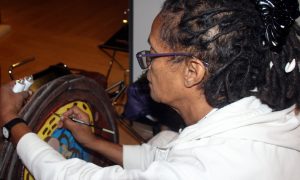
Meet six incredible feminist art equity and gender justice activists who are reimagining the art market.

A pioneer in the field of light projection mapping, Emma López transforms public spaces and minds through the power of art.

Art: “Patience” by Chief Lady Bird. During the long drive to my new home in northwestern Ontario, I pass numerous Trading Posts that line
The post Hurtling Towards a Metaverse Future appeared first on LiisBeth.
]]>The post No Person is Ever Just One Thing appeared first on LiisBeth.
]]>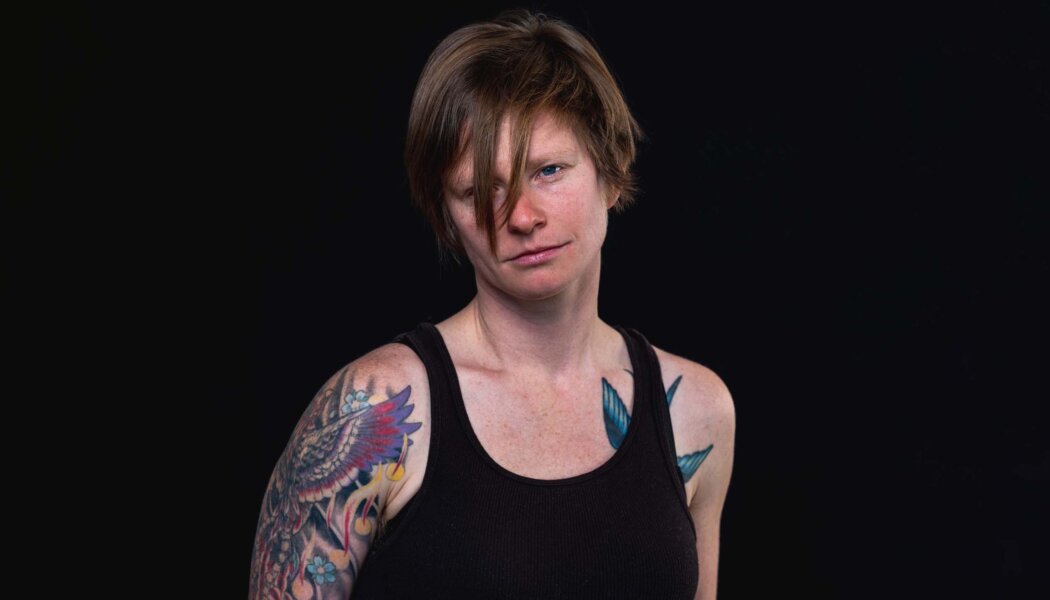
If this book was a Venn diagram, the intersecting circles would represent the relationship between rage, compassion, and survival. Lori Fox has crammed a lot of life (and moving) experience in their thirty-something years on this planet. They are unique, as we all are, by default: “I’m a visibly queer and non-binary person who grew up in a time and place when that was even more dangerous than it is now, who has lived and worked in communities and settings where my queerness was often a threat to my safety. I should, statistically speaking, be dead. Probably more than once,” writes Fox.
Blunt and unapologetic, recurring themes and ideas are intertwined and interconnected throughout the book and include, but are not limited to, financial instability, mental health struggles, sexual assault, emotional and physical abuse, the unconditional love of pets, and the consequences of speaking truth to power.
This Has Always Been a War (Arsenal Pulp Press, 2022) is also about the duality and complexity of our human existence. One can be enemy, stranger and lover all at once. We can be both strong and vulnerable. Fear and courage often ride side by side in Fox’s camper truck or beat up cars. Shame snuggles up to pride and perseverance is the shadow side of surrender.
At times laugh out loud, at times jaw-droppingly shocking, Fox writes about the hard things. They write about the things we think we shouldn’t say. “It’s because I won’t nod, smile, and keep my fucking mouth shut.”
The writing is compelling and gripping. Every essay flows like a draft beer from a fresh keg in one of the many restaurants Fox worked in during their seventeen years in the service industry.
You’ll find descriptions like:
“Her making excuses, dodging responsibility, calling down some folksy morality or looking to a fucking magical dead-ass zombie carpenter to fix the things she, herself, refused to fix.” When Fox disclosed a sexual assault by a family member to their mother.
“This novel, like its narrator, needs to take itself firmly by the shoulders and pull its head out of its own ass, because pay the fuck attention.” From Fox’s take on Sophie McIntosh’s novel, Blue Ticket.
“It was partly furnished, and in the nightstand there was a bottle of KY Jelly and a pair of edible underpants with a bite taken out of the crotch.” Describing one of the numerous apartments they’ve lived in.
If you are uncomfortable with hearing about poverty, hunger and abuse, you should read this book. If words like cunt, dick and mother-fucking asshole make you squirm, buy this book and challenge yourself to walk a mile (or thirty thousand) in Fox’s shoes -worn out flats or a pair of boots with a knife tucked into the side.
Because what does Fox want readers to do? Open their minds. Ask questions. Never assume.
Fox takes responsibility for their choices but argues that some choices are not available to many. The book peels back layers on topics that have shaped Fox’s shapeshifting existence to reveal the raw and tender truth of their lived experience. Here are a few excerpts that stood out.
ON JUSTICE
“We are not paid fairly for the things we make, yet things can be denied us or taken from us if we cannot pay for them. If we refuse to obey the rules of the people who have those things, we will be punished. If we refuse to be punished, we will be imprisoned or killed.
We are told, when these things happen, that this is justice…Serve us or starve. Work or be evicted. Obey us or live in misery. What part of that sounds like a choice?”
From This Has Always Been A War
ON DUALITY
“I think about that photo [a young man in a leather jacket, clean cut, smiling warmly, leaning up against the side of a black-and-chrome Harley Davidson motorcycle] a lot, about how there’s no one story, no one straight narrative that can be told about a person, no matter how much we would like there to be. Everyone you know, including yourself, is a shapeshifter, some of us more so than others. No person is ever just one thing.”
From Every Little Act of Cruelty.
ON LUCK
“Only a small part of my survival can be attributed to my own choices and skills; something I learned while I lived out in the bush is that sometimes good things happen to you, and sometimes bad things happen to you, but mostly, things just happen to you. You can be the fittest, most cautious, most competent bushperson around and still get mauled by a bear or drown in a river for no goddamn reason at all other than it’s just something that happens. You can prepare and do your best to avoid bad situations, but the amount of power you have to control your fate is limited. The bush—and the wider world—is amoral and impartial to both your success and your suffering. Some people find that hard to stomach, but I find it tremendously comforting. Often, things just are.”
From This Has Always Been A War
In short, we need more books like this.
We need to read the stories of despair and suicide attempts and crippling depression. We need to share our own stories of resilience and courage and survival. Because, as Fox puts it: “If things are the way they are because this is the only system we have, then we need a new fucking system.”
“It’s a system of learned helplessness. And it doesn’t have to be that way”, they write.
While the rants and tangents are on point with some laugh out loud metaphors, some trimming back to pieces where a point has already been made might allow the prose to pack more of a punch than it already does.
We recommend buying a copy of Fox’s book from your local indie feminist bookstore or via the publisher here.

How a former politician turned radical reverend made change by working with the enemy.
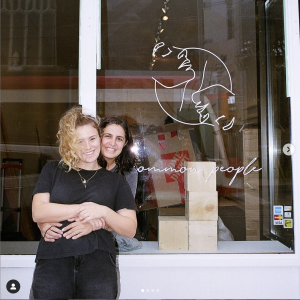
Queer-owned businesses face unique challenges, compounded by the pandemic.

It’s February. Time to celebrate love, sex and body positivity with a playlist that features some amazing emerging artists. Enjoy another exclusive LiisBeth playlist from Sadé Powell
The post No Person is Ever Just One Thing appeared first on LiisBeth.
]]>The post FitIn’s Marathon to Investor Funding appeared first on LiisBeth.
]]>
The hashtags on FitIn founder Catherine Chan’s LinkedIn profile tell the story of the long hard road to investor funding: #breakthebias, #fundingforwomen, #economic inclusion. Her first foray into the school of hard knocks was at an investor boot camp. The male instructor insisted the stepping stone to investor money was raising money through family and friends first. “If your friends and your family aren’t willing to invest in you, investors consider it a red flag,” she said. Unfortunately, Chan didn’t know people with deep pockets like the male MBAs who tapped their old classmates and colleagues for cash. Although she was “fish-wife swearing” to herself about the injustice of it all, she found the experience invaluable. “I knew that my own money was going to have to last me a lot longer than everybody’s else’s.”
Despite the long hours devoted to FitIn and two external leadership-level roles, the 48-year-old founder and single parent looked surprisingly relaxed for a Friday afternoon. Appearing on Zoom in a leopard print top with chunky reading glasses resting casually on top of her head, her calmness spoke to the value proposition of her business. Chan had long suffered from depression and fitness changed her life. As she approached forty, she decided to train for a marathon. “By the end of it all, I was a whole new person,” she said. “The only thing that has ever given me peace is a workout. I wanted that for everybody else in the world.”
How Does FitIn Fit In?
FitIn is a shared economy platform connecting fitness and wellness providers with fitness and wellness enthusiasts who visit FitIn’s ‘marketplace’ where classes and events are aggregated. This one-stop shopping makes fitness and wellness more accessible, i.e., no more scouring the internet! Fit-preneurs (Chan’s name for her providers, typically independent personal trainers, wellness practitioners and smaller fitness studios) use FitIn to market their services and process customer payment at an affordable rate.

Running the Investor Funding Marathon
Chan is reluctant to share negative experiences about what it’s like trying to raise funds as a female in a tech-enabled business without a male technical co-founder. She shared one story as an example. During her pitch to a group of angel investors, an older man told her: “There’s a David somewhere in that marble” and that she was “onto something.” But then asked the sort of question less often posed to male founders: “Aren’t you concerned that someone with more money is going to build the exact same thing as you but a lot faster and better?” She bit her tongue but wanted to say: “You know, you have the power to make that not happen.”
While Chan has not yet acquired venture capital or institutional funding, she did secure two angel investors at an Open People Network pitch event. And, a few friends and family are now investors too. Unfortunately, grants for her type of business are scarce. Chan said funders often think of fitness as just a fun thing people do on weekends. “They don’t get the impact it can have socially, and economically when you have a healthy population,” she said.
It should be just a matter of time before Chan raises the money needed to accelerate the growth of FitIn. After all, she has a unique offering. FitIn combines the best features of business unicorns Mindbody and ClassPass.com into one product. What’s more, FitIn is a social enterprise that supports—rather than exploits—gig economy workers. Chan plans to launch an affiliate shareholder program, which she said is “A virtuous cycle economy within the platform itself.”
Mentorship at the Heart of Success
Chan amassed skills for successful entrepreneurship even before realizing this was her dream. She obtained a graduate degree in classics in 1998 which has proved to be invaluable. Her degree integrated diverse disciplines from philosophy to politics to analyze the chain of events in a bygone era. “It’s that big picture mentality,” she said. This education also honed her presentation skills – key for pitching investors.
After graduation, Chan did reception and admin work before her upward trajectory began in sales and training at well-known corporations. Eventually, she grew weary of office politics and under-representation of woman at the top. After being let go from her last corporate role, she decided to pursue a business idea percolating for some time. She began searching ‘start-ups’ on Facebook. Networking events at places like Startup TO and Startup Canada began to fill her feed. “I let the algorithm feed me all the information I needed,” she said. She immersed herself in the startup landscape like at that investor boot camp. FitIn was born.
Two years ago, Chan participated in Fifth Wave’s Connect Accelerator Program. Her mentor Val Fox was “absolutely amazing.” One piece of advice Fox offered was for Chan to seek freelance work rather than devote all her time and energy to FitIn. This has allowed Chan to keep a roof over her and her child’s head without the stress of cash flow, and grow FitIn on her own terms rather than accept funding with conditions that might be in opposition to her own feminist values.
Chan is paying the mentorship she received forward. “I don’t think I can ever pay back in my lifetime of helping people, but boy I’ll try,” she said. She was recently appointed as Entrepreneur in Residence at Fifth Wave, and also mentors women at Elizabeth Fry Society Toronto. Mentoring others has helped her grow as an entrepreneur. She recalled a saying about how people barely remember things told to them but remember things forever when they teach it to others.
The Funding Marathon Continues
FitIn is still in its early days. While most of her Fit-preneurs are in the GTA (where Chan lives) she has big plans. “I would really love to create a virtual fitness tourism type of economy,” she said. This would involve getting fitness and wellness providers in rural communities onto her platform, giving them access to a wider audience.
“So, give me a million dollars and there is no way I am not expanding across Canada in a heartbeat, making sure we are supporting communities and accomplishing our mission of helping Canadians get healthier physically and mentally.”
If you would like to invest in FitIn, Catherine Chan can be contacted at [email protected]
Publishers Note: The FitIn is a part of the Fifth Wave, a year-round program offered by CFC Media Lab and its partners to support the growth and development of women entrepreneurs in the digital media sector in southern Ontario. All enterprise founders in the Fifth Wave community are selected for both their potential and commitment toward weaving intersectional feminist ideals of equity and fairness into sustainable and scalable business growth strategies. Fifth Wave Initiative is committed to 30% participation by members of underrepresented groups. The Fifth Wave is a LiisBeth ally and content sponsor at the Lighthouse level. Applications for Cohort 5 will open this summer.

An edu-tech startup improves grades – and passes on investors.

There are more women-focused capital initiatives and funds than ever—but is the money getting into the right hands?
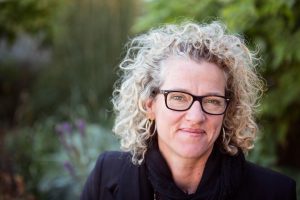
Kristi Herold became CEO of one of North America’s largest sport and social clubs by targeting one goal: making sports accessible for everyone.
The post FitIn’s Marathon to Investor Funding appeared first on LiisBeth.
]]>The post Gaming for a Greener Future appeared first on LiisBeth.
]]>
Jane Ji hopes for a better future.
In efforts to make her hope a reality, Ji works with an eco-focused mindset that includes educating young people through gamification. Her feminist enterprise, Springbay Studios, develops interactive children’s games and experiences that aim to engage kids with environmental science. The climate crisis belongs to everyone. But it’s the youth of today whose future is at stake. Ji’s goal is to empower young people to take action toward building a world where humans and nature live in harmony.
Where It All Began
Ji grew up in mainland China and when she entered the job market in the 1990s she found work with a Taiwanese gaming company that was hiring anyone with an engineering background.
It’s rare that a feminist biomedical engineer ends up in the gaming industry but that’s what happened to Jane Ji. Her first job in the video game industry was a programmer, writing code. Through experimenting with software development, Jane discovered her passion for digital storytelling and that video games were an ideal tool for learning.
“It was kind of an accident, but fortunate for me to find something I really love,” says Ji. “I think a lot of people who have an engineering or science background are also interested in art.”
Back then, Ji was chosen for the job because of her skills and qualifications, not her gender. She remembers the fairness of not being judged as a female in a male-dominated industry and went on to use the same equal opportunity hiring practices years later within her own enterprise.
Ji became the lead game designer at the company and worked on a game that was based on the classic Chinese novel and love story, Dream of the Red Chamber. Being the lead gave her the opportunity to design with a feminist lens where she fostered a collaborative and inclusive environment with the other programmers and artists. She worked with another female engineer who led the software design and they were the only female-led team within the company. While the men focused on traditional time-based strategy games, Ji took a new approach to gameplay that included simulation plus role play about emotion.
However, the gaming industry faced many challenges in China. Software piracy and illegal licensing was a big problem in this country. Ji couldn’t see a future in her home country as a game developer and decided to immigrate to Canada in 2000.
The Path to Springbay
Her sister Grace was already in Toronto so Ontario was the obvious choice. Once Ji was settled, she sought out work at companies which were making games that aligned with her feminist mindset and values of learning and caring for others. She attended conferences like the Game Developers Conference to network and meet people in the gaming industry. Ji worked as a freelance consultant before co-founding Springbay Studio in the early 2000s with her business partner—also her sister—who had a degree in computer science as well as managerial experience.
Springbay’s original tagline was: Create Fun Gameplay From a Feminine Perspective.
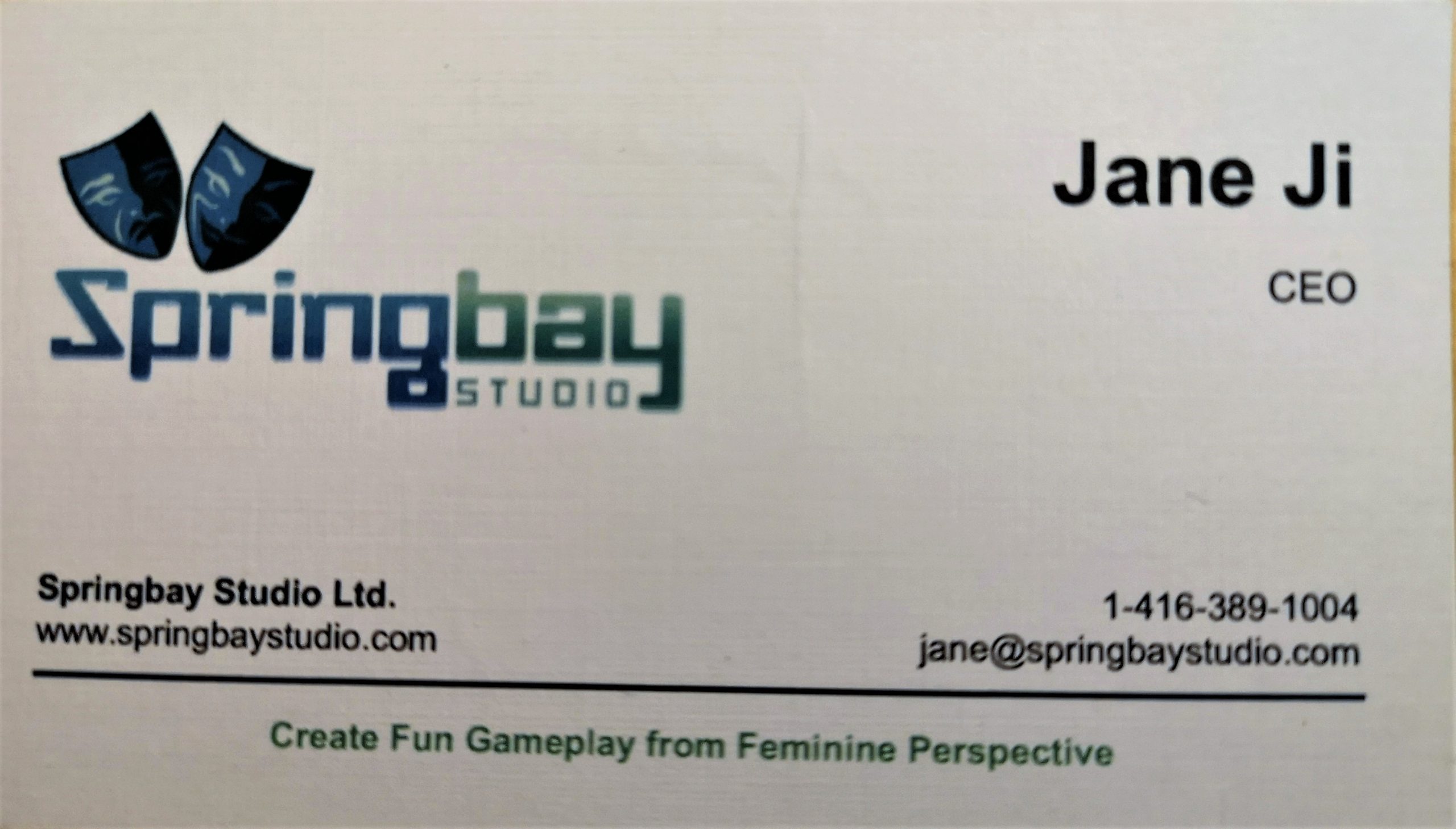
Original Springbay business card. Photo provided.
This perspective was – and is – how Ji sees the world. Her perspective includes nurturing and supporting people and preservation of the natural environment in which we live. Springbay projects reflect and promote the creators’ feminist values of equality and inclusion. They benefit women, men and youth, because players come in many shapes and sizes.
Springbay’s early projects included games like the Living Garden at a time when Facebook games were gaining popularity. The game reflected feminist values “I always think, when we play something, I hope that we learn something,” Ji says.
Another early Springbay project was inspired by the book Men Are From Mars, Women Are From Venus. The game, Mark and Mandi’s Love Story was distributed by Big Fish Games and is still available for purchase. Ji worked with a team of artists, programmers and developers to create the game. Ji enjoyed the challenge of using game design to present the different ways that men and women view certain subjects in a fun and lighthearted way.
New Perspectives, Bigger Impact
After Ji had children—who are now both young adults who have attended university—she was motivated to create more meaningful gaming experiences that had a bigger impact. She had always been aware of climate issues but her research was an eye opener and as a mother felt a responsibility to take action to care for the future, for her kids. “We are biological creatures. If this biosphere is messed up, we do not get a chance.”
When Springbay looked at who their audience was and the content they were building, it became clear they should start with children. Screen time is an ongoing issue for young people growing up in today’s digital work and Ji is well aware of the pros and cons of what online learning can offer. “If we are developing a game, we’re not going to glue them to the screen, because this is not how you are going to build a foundation,” she says.
Springbay’s mission is to use gamification as a way to encourage young people to learn about and take action toward sustainable lifestyles. The innovative products are on a scalable, gamified platform for global educators to inspire greenhouse gas emission reductions.
The beauty and benefit of gamification is that it provides the feeling that you are playing a video game, but it’s not truly a game. Players are earning badges and points in a structured way that involves user interaction. The iBiome-Wetland game and app and the iBiome-Ocean school editions offer resources for students to build and explore natural habitats in virtual settings. The blend of virtual learning with real life field trips is a winning combination in that nature doesn’t necessarily guarantee results such as spotting a specific type of wildlife. But you can count on the online version to deliver. Educators have told Ji how the gaming components keep students engaged and complement their teaching units on the ecosystem and natural habitats.
Springbay’s recent endeavour is the League for Green Leaders.
Springbay Studios video that features youth talking about their experience with the games.
The goal of the League for Green Leaders is to give young people an opportunity to build a virtual ecosystem where they can learn about biodiversity. Including ‘leaders’ in the name was a deliberate choice says Ji: “We’re trying to make our children become the leaders rather than be the sufferers for the eco side.”
It’s Not Easy Being Green
What’s missing? What would help?
In addition to building sustainable lifestyles, sustainable funding is what Springbay needs develop their learning products. Ji says that guaranteed monthly income from donations or ongoing matching funds from accelerator or government programs would be a step in the right direction.
But funding is hard to come by. Some days are more discouraging than others. In some cases, it has come down to a matter of semantics where Springbay has been excluded from government funding because they don’t meet the criteria requirements of ‘clean technology’. The term ‘clean technology’ is limited to tech such as solar panels, wind turbines and electric cars. Ji isn’t arguing that these sectors aren’t important but insists that environmental education needs to be part of the equation if we are going to limit global warming in the near future.
Still, she has hope.
“Our games are not all gloom and doom,” says Ji. “I think people are trying different ways to convince people that if we work together, there is hope. We cannot change this by ourselves.”
If people think that the younger generation aren’t mature enough to tackle these complex issues we need only look to examples such as Greta Thunberg, the origin of Earth Day or the success that Springbay has seen.
“My fourth graders really enjoyed tracking their CO2 footprint by participating in the League for Green Leaders Pilot Program.” – Lynne Caffee, Pennsylvania, USA
“This smartly designed environmental sim lets kids explore three wetland habitats. By drawing connections between different species and creating a web, kids learn about producers and consumers, and about predator/prey relationships.” – Common Sense Education, Best Learning Apps
“See what happens when you add extra of one species to your biome. Students will see right away how species depend on one another and how easy it is for an ecosystem to get off-balance.” – American Association of School Librarians, Best Teaching and Learning App
Publishers Note: Springbay Studios is part of the Fifth Wave Initiative, a year-round program offered by CFC Media Lab and its partners to support the growth and development of women entrepreneurs in the digital media sector in southern Ontario. All enterprise founders in the Fifth Wave community are selected for both their potential and commitment toward weaving intersectional feminist ideals of equity and fairness into sustainable and scalable business growth strategies. Fifth Wave Initiative is committed to minimum of 50% participation per cohort by members of underrepresented groups. The Fifth Wave is a LiisBeth ally sponsor at the Lighthouse level. Applications for Cohort 5 are open. Apply here

One theatre company’s big idea to save the world: teach kids how to be environmental superheroes

A workshop on the topic provokes months of contemplation on how to see the world anew.

A mining company tried to force Sabrina Dias out. Rather than leave the sector, she set up her own shop, determined to help a laggard industry have a more sustainable future.
The post Gaming for a Greener Future appeared first on LiisBeth.
]]>The post RADICAL IS BEAUTIFUL appeared first on LiisBeth.
]]>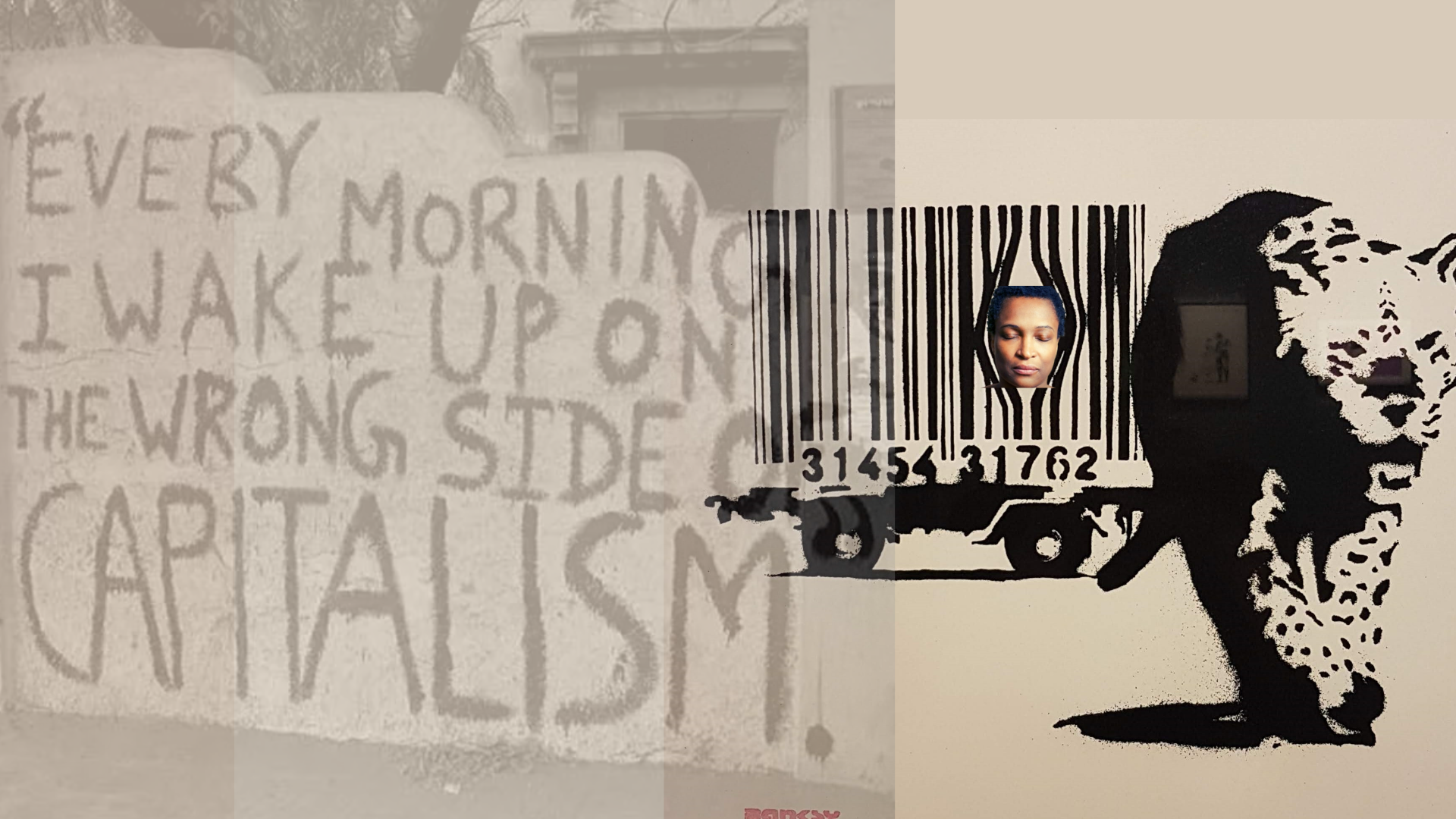
My entrepreneurship journey started as a teenager. I signed up for a local entrepreneurship education program where high school students could run a business with the help of business leaders from around the region. Turns out I was good at it… REALLY good at it. Several awards, scholarships and two national conferences later, I found myself at a crossroads. Should I study commerce in university? Yes and no – I have a Bachelor of Science in Language Honours degree. All is not lost.
After completing a post-graduate certificate in Human Resource Management, I went on to spend a decade working in HR for some of the world’s most recognizable brands. My interest in entrepreneurship never faded as I began to see how large businesses failed to honour human beings as mission critical to the success of any organization.
I began to wonder about what it is to run a business. I began to question what a business actually is versus commerce (The exchange of goods & services for money). The years I spent in the dank depths of capitalist endeavours made me realize I never want to be a part of such a venture – a venture where systemic oppression (namely capitalism & white supremacy) reigns supreme.
I had the distinct opportunity to experience innumerable instances of anti-Black racism in my career. No matter how much work I accomplished, intellectual property I produced or technology I mastered faster than others, I was still a Black woman seen as slow, lazy and a threat to the established order.
I also began to wonder about commerce… and how my enterprises can be commerce. As I worked to bring my own enterprises to life, I happened upon the concept of radical entrepreneurship. (Holla!)
Many books, journals and conversations later, I decided to define what radical entrepreneurship meant for me as a Black woman and a person of the global majority. Radical entrepreneurship happens when you start an enterprise that transcends racism, capitalism, patriarchy and white supremacy.
It’s a return to commerce: the exchange of goods & services for money. It’s treating people as equals, with respect, paying a thrive rate wage AND distributing wealth, educational opportunities, upward mobility influence and sharing connections (money is not the only kind of wealth), ensuring health, wellness, and not working people 16 hours a day (which people did). In short, commerce as community – a spiritual and activist endeavour undertaken to enjoy the process of work; trading (We love working at something as humans) while lifting up others in the process.
Radical entrepreneurship is having the courage to step outside societal norms to run your enterprise as you see fit. There are elements you will definitely need like good recordkeeping and an accounting/bookkeeping practice. However, the radical part means your enterprise is contributing to eradicating social injustice.
Capitalist business education will tell you that your business’s sole goal is to earn money for investors and to place profits over people. Radical entrepreneurship values people, their contributions and their livelihoods.
Yet, I’m still a Black woman with light-skinned privilege in this dominant culture – a culture where awareness of anti-Black racism is now in the limelight and still somewhat of a trending hashtag. Corporations are taking advantage of this golden-hued PR opportunity to allocate a teeny fraction of their sizable quarterly profits to Black entrepreneurship initiatives. Let’s not forget the countless mentorship opportunities that ultimately don’t cost anything but look good on paper.
The Black community is not a monolith but is widely perceived as one. I constantly see Black entrepreneurs who are regarded as (air quotes) successful by white capitalist standards put on display to say “Hey, we’re not racist… look at this cishet, neurotypical, able-bodied Black person who is now a millionaire.”
To put it simply, not all skinfolk are kinfolk.
Huge barriers to funding opportunities continue to exist within the Black diaspora. There’s a significant divide and significant conservatism in the diaspora. Cishet neurotypical, able-bodied Black people who are willing to accept the crumbs of capitalism may indeed be successful in obtaining a few loonies but it’ll be nowhere near the resources available to their white counterparts.
Studies have been done about the hardships that Black female entrepreneurs face. The proposed solutions are literally steeped in capitalism & white supremacy. Black venture capitalists are still capitalists. We also haven’t talked about the extraneous hoops Black women entrepreneurs have to go through to access the few funds (e.g. Being asked about your sexual orientation on a loan application which, last I checked, is a human rights issue) and even then no one seems to trust Black women with a significant amount of money…there are hair & nails to be done after all.
In navigating this world, I find myself having to explain myself constantly. I have an Honours Bachelor of Science in Language. I’m fluently bilingual in Canada’s official languages. I have worked in global head offices for some of the world’s most recognizable brands. Mastering new technologies is easy for me. But all people see is Black… and immediately assume I’m not qualified enough, not skilled enough, not professional enough…the list goes on.
Professionalism – for the record – is deeply rooted in white supremacy.
My mere existence is resistance in and of itself. When those days come where I wonder if my enterprises will actually thrive despite the seemingly insurmountable barriers that line my way forward, I have to remind myself that being a Black radical entrepreneur is more than a radical act. By choosing commerce over capitalism & white supremacy, I’m now actively creating change. I’m learning by doing. I’m gathering more knowledge and insight every day.
Dominant culture can keep their crumbs of capitalism. I won’t scale my enterprises in 3 months or less. I don’t exist to make money for those who’ll remove it from the economy at large and hoard it for their own purposes. I won’t pander to those who choose not to see my worth or genius in favour of my skin colour.
Radical entrepreneurship is going to be the way forward for this Black entrepreneur.
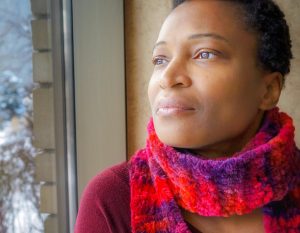
Althea Branton was interviewed by an intake manager at a startup accelerator. Shaken, she took her rage to the page.
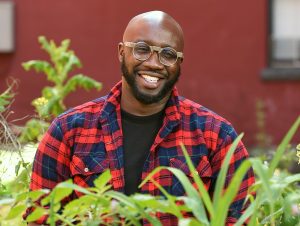
How one organization radically stirred up conventional business practices to heal communities — and flourish in difficult times.
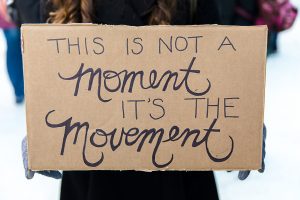
Entrepreneurship support organizations are keen to profile their diversity and inclusion work–but are are policies and procedures keeping pace?
The post RADICAL IS BEAUTIFUL appeared first on LiisBeth.
]]>The post STRIKING THE RIGHT CHORD WITH WOMEN ENTREPRENEURS appeared first on LiisBeth.
]]>
“They tried so hard to bury us, they didn’t know that we were seeds”. With these words, Ojibwe founder of Cheekbone Beauty Cosmetics, Jenn Harper, set the tone for this year’s STRIKEUP event – a digital conference for women entrepreneurs.
Harper had me hooked. Her profound words during her remarkable opening address became the emotional backdrop of the entire event for me. She went on to share her personal journey of survival, healing from inter-generational trauma of residential schools and settler-colonialism, to eventually going on to run a successful beauty brand.
Based on my previous experiences at entrepreneurship events which centred on individualism, grit and glorified capitalism, arriving at STRIKEUP I had expected to gain business acumen. I wasn’t expecting to be quite this moved and motivated. This space felt different. This space gave space to stories that left my heart full, and my mind buzzing with ideas.
As a multi-passionate entrepreneur, I was eager to learn about ways to nurture the growth of my businesses ethically and sustainably in a pandemic market that seems to be changing at a mind-spinning pace.
Collective Care in Commerce
Work-life balance was a theme that came up often in the success stories that the speakers shared.
STRIKEUP centered much of the conversation of success in business on inclusion and an ethos of self-care and community care.
In a fireside chat with Joanna Griffiths, she shared the importance of boundary setting to avoid taking on too much, reminding us that ‘no’ is a beautiful word. It was inspiring to hear from women who valued their reclaimed time -for how much more they were able to invest it back into themselves, their loved ones, and even their customers.
Catherine Addai, Founder of the clothing store Kaela Kay said it beautifully when sharing that her decision to focus only on her business instead of working multiple jobs was a risk, but one that allowed her time for herself, her family, and her mental health. Throughout the conversations, there was an important parallel drawn between our capacity to care for ourselves as entrepreneurs, and the possibility to also care for and nurture every aspect of our business and the stakeholders involved – from collaborators to customers.
The Futurepreneurs
What I found most inspiring about STRIKEUP was the hope it instilled for the future of women’s growth in business.
In her talk about AI (artificial intelligence), adaptations and tech trends, Amber Mac debunked the idea of the doomsday scenario often depicted by the idea of AI and automation, highlighting our incredible ability to adapt to technology. She shone a light on technology’s ability to unite us by providing greater access to all, while also helping us prioritize our purpose and re-imagine work. Her focus was on ‘growing’ or ‘soft’ skills like critical thinking, creativity, and emotional intelligence that push us forward and help us to continually adapt to a changing world.
Similarly, in her fireside chat, Griffiths says that there is no one-size-fits-all approach to ‘Futureproofing’ – preparing your business for the future. Building a business that is future-ready is about truly listening to your customer’s needs and continually trying to understand and adapt to their wants and needs.
When it comes to future-focused thinking, businesses are shifting faster than ever. Social Media Strategist Alecia Bryan’s learning lab about simplifying operations was an insightful, deep-dive into automation tools and approaches that could support that shift. She reviewed e-commerce software that supports adaptive change such as optimized online stores, conversational commerce, and social media platform integration as key to a ‘digital first’ business approach.
My most meaningful takeaway from STRIKEUP was the validation that women business owners can successfully emerge into a lane of our own choosing, through a multitude of entry-points into entrepreneurship.
There is no specific roadmap, only a fine tuning of your internal compass, the right tools to stay on your path, and strong companions to help you find your way. Harper put it succinctly. “There really is no wrong decision if you learned something from it”.

From a Brit who zoomed in for the Canada’s women entrepreneur StrikeUP conference.

This week, LiisBeth invited Urbanology, a Toronto-based lifestyle and music magazine, to curate a playlist for readers looking for a cure—and to discover new artists in the process. Enjoy!

“My eight-year-old son did not want me to leave. He said, ‘It’s too dangerous Mama. Please don’t go. I love you. Just email them your concerns.'”
The post STRIKING THE RIGHT CHORD WITH WOMEN ENTREPRENEURS appeared first on LiisBeth.
]]>The post The Politics and Practices of a Feminist Entrepreneur appeared first on LiisBeth.
]]>
I remember the sting felt while listening to speakers at a small business conference ten years ago. It was there that I sensed alienating and regressive elements about the small business space. Table talk centered to the political right, and sometimes far right of center. I sensed contradictions between the values speakers espoused and their operating practices. For example, firms that showcased donations to local food banks while paying temp workers $14.00 per hour to minimize labour costs. It became evident who in the room had power through voice and who did not. This moment has not left me. Further forays into small business spaces have reinforced my initial impressions.
Small business communities are not, of course, homogeneous. In my experience, the pulsing heart remains male-dominated, conservative, and increasingly populist. When it comes to advocating for justice, diversity and inclusion, its leaders are more likely to push for initiatives that put money in owner pockets without consideration how they might affect a wider group of others.
Given the size and power of the small business community, those of us working for change should be concerned. Social change makers cannot ignore Canada’s small business community. From 1.2 million incorporated, for-profit enterprises in Canada: only 380 (.0003%) are ‘Business for Good’ BCorps.
Business as a force for good?
It’s 2022. The world is on fire. I am getting impatient. Being a conformer in business is not enough. If we want a better world, we need progressive small business owners to put their weight behind advocacy and organizations working for social and economic justice.
History has shown that for-profit founders can be powerful allies to movements for justice. In the 18th century, small business traders and merchants helped peasants and serfs accelerate change from feudalism to capitalism. Dutch bankers risked their lives by leveraging their wealth to resist the Nazis in the early 1940s. We can look to the founding of women-owned credit unions in the 1970s. Today, small business owners have been successful in fighting interest rate hikes and landing COVID-related recovery measures. Small business advocates are powerful when they want to be. The community knows how to organize and have impact, when its interests are perceived to be at risk.
If today’s economic system that shapes our lives is hurting most of us, doesn’t it make sense for small business owners to challenge capitalism, colonialism, patriarchy and other forms of oppression?
In Canada, small and medium-sized enterprises (SMEs) represent 97.9% of all incorporated companies. 53.8% are companies with 1 to 4 employees – including the founder – employing 67.7% or 7.7 million Canadians. These businesses generate 37.5% of private sector GDP. Women-majority owned businesses represents only 16% of incorporated SMEs, and another 13% are equally owned by men and women.
Clearly, the small business part of our economy is big, influential, and while women are making progress, still mostly male-led.
The small business entity is unique from it’s large, often publicly traded, hired CEO-led counterparts in that these founders have considerable freedom to choose and operationalize their politics and values. They can also pivot and implement changes quickly. Given this freedom, and the weight and size of the Canadian small business community in aggregate, it has the power to change — everything. Instead, it primarily chooses to work at maintaining and perpetuating the status quo.
This set me on a journey.
Are there others looking to re-imagine the role of small enterprise in these times of growing, grotesque inequality? Are there other founders interested in leveraging their passion for innovation, fairness, inclusion, resilience building and enterprise crafting to help dismantle rather than protect capitalism, colonialism, patriarchy and white supremacy?
Intersectional feminist Entrepreneurship – a porchlight in the storm
Turns out there was.
However, finding the feminist entrepreneurship community was a bit like finding a stick insect in a forest. They were there, but they’re hard to find. This required patience and persistence.
But find them I did.
The feminist enterprise community is an informal, intergenerational, diverse, international group of brave pioneers who are scattered across the world. The composition includes feminist thought-leaders, entrepreneurs, investors, writers, artists, academics, activists, corporate ex-pats, and dreamers. Today, they are my core community of practice-as-a-feminist entrepreneurs.
Our conversations and debates cracked me open and let the light in. Online meet-ups and in-person conferences, and ongoing debates provide nourishment, support, teaching and provocation Through these experiences, I have emerged from beneath a heavy blanket of no longer relevant beliefs, values and teachings, including those espoused in my MBA courses—accumulated and internalized as unassailable truths gathered over the decades.
Come Sit At Our Table
Today I am a proud and vocal feminist entrepreneur. I do business very, very differently because of what I have learned.
I dream of a day when saying ‘We are a feminist business’, tells people what the enterprise stands for. But first, we need more people to understand what feminist founders believe and what feminist enterprise community is about.
So, draw up a chair, and let me share what I have learned from my teachers:
This all said, we are not yet organized as a strong political voice. But we are working on it. It is critical that we do this work to sustain our collective voices, have resources to be allies, and mobilize this small business body politic.

Growing the new, inside the old
The feminist entrepreneur’s movement remains an outlier. It’s not an idea. It’s a practice.
It is ignored by labour, the left, and side-eyed by some who see feminist entrepreneurs as neoliberal lipstick capitalists. Mainstream entrepreneurship and small business people think we burn bras for a living.
Nothing could be further from the truth.
If we are to build a post 20th century capitalist world in which all can thrive, we need activists and movements to take a closer look at the small business space as an ally and to find ways to mobilize individual change makers within it.
We need entrepreneurship educators and training institutions to overhaul programming—which emphasize enterprise skills and knowledge developed in the 1990s.
Just imagine if all SMEs were a force behind transforming capitalism towards a healthier, fairer, market-based system that operates in anti-oppressive, non-extractive, human-centered ways of strengthening community!
Imagine if they are not.

One theatre company’s big idea to save the world: teach kids how to be environmental superheroes

Two Black filmmakers found a treasure trove of activist footage – and a company.
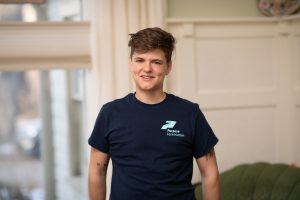
Kalen Taylor founded a dual-purpose construction company to build and rebuild lives. Foundational lessons to be learned.
The post The Politics and Practices of a Feminist Entrepreneur appeared first on LiisBeth.
]]>The post The OPS Collective – One Woman’s Vision, Many People’s Opportunities. appeared first on LiisBeth.
]]>
Nana Moore loves being creative.
However, her Ghanaian upbringing compelled her to do something more ‘traditional and stable’. Now as a CPA and professional finance director, her ‘traditional’ work couldn’t be further from creativity.
But once afflicted with the creative itch, it stays there, eager to resurface at the slightest opportunity. So it should come as no surprise that Nana found a way to channel her creative energy by starting her own enterprise. That was a nerve-racking and scary decision for this thirty-something year-old sole proprietor.
The Ops Collective, founded in 2016, is an online, virtual business management and marketing services company that helps build brands via the creation and management of high impact content for social media. Their specialty? Creating content and amplifying brands on Instagram and TikTok. “Even though I have held big leadership roles for corporations, I’ve always been behind the scenes,” says Moore. Now that she has found an outlet for her creative energy, she feels more alive. Her own business allows her to socialize with others on a different level than in her current role as finance director. Plus, creating virtual enterprise is relatively easy. “The Internet has changed the way you can build your business. “The internet has changed the way you can build your business. It’s no longer about just handing out flyers or posting random billboards. Businesses with a zero-marketing budget can now build an online following of loyal customers through social media and brand influencers.”
Minimum overheads, maximum reach
For Moore, keeping overheads down by designing and implementing a frictionless, flow-based business model and finding clients are critical factors for a successful business. Moore launched her virtual business management enterprise on Facebook and found it was a fast and easy way to line up clients and find exceptional contract talent, no matter where either lived in the world. ““Fortunately, an online service business doesn’t need much money upfront”, says Ms. Moore. “I’ve never taken out a loan or brought in investors. I’ve used the money earned from my corporate roles to fund my business and continually reinvest revenue generating back into the company.”
The Ops Collective is based on horizontal leadership, empowered by the collective energies and talents of its core team. To ensure everyone operates on the same page, Moore makes sure they are clear on the mission, vision, operating values and work ethic expected of them. When there is a spike in the workload, she takes on additional operational, financial and leadership work.
Moore also reaches out to her peers for support. This includes participating in coffee chats with other online business managers, exchanging insider information about onboarding talent, setting up proposals and hiring business coaches.
Women helping women
Moore works to provide income opportunities for other women whenever possible. She is clear in her definition of feminism—for me it’s about the ability to be financially independent. “I run my own business, many of my clients are women and I hire other women.” The majority of her women clients came to her through referrals. “When you do good work your clients will tell other people about you.” Moore also works with talented women lawyers who have introduced her to their networks, opening new doors for her. Her clientele is almost entirely based in the U.S.
Managing Growth
As the company took off, she realized early on that she was holding the company back because everything came back to her, slowing down the entire process. She was overwhelmed with client calls, strategizing, dealing with subcontractors and liaising with various people. She realized she needed to reassess how she wanted her business to run. So, she applied to-and was accepted-by Canada’s first feminist accelerator program for women in digital media operated by the Canadian Film Centre. Mentors at Fifth Wave helped her pivot to design a more sustainable model. She also focuses more on strategy and creative vision as a founder—no more micro-managing. “This year was all about spreading the autonomy, re-pivoting and changing the business model.”
Moore’s lived experience and background in finance and operations sets her apart from other service providers in this space. This enables her to look at the big picture, while also being detail oriented. Further, The Ops Collective doesn’t only look at social media opportunities for clients; they also identify gaps and suggest ways to improve operations across the entire ecosystem of a company.
Activism makes for better business
Due to the pandemic, domestic violence and homelessness have been on the rise. “As a brand we have a critical role to play in tackling domestic abuse and homelessness in Toronto. I want us to be known as a company focused on creating educational programs with a heavy emphasis on community building.”
Currently, she is working on a course which will allow her to offer virtual assistance to women in shelters and help them make money online. “Often women who experience domestic violence can’t leave because of money. If we can show them how to manage their money, it can help them in their dark times.” She wants to use the profits generated for programs and sponsorships for abused and homeless women. “That’s the reason why I started the company. My calling is to help people and impact lives on a more meaningful and deeper level than my corporate roles permit.”
As a mother with a young son, Moore also wants to support programs for boys because she believes that young boys can get lost in today’s world and are in urgent need of mentorship.
She believes today’s youth look for instant gratification, making patience a much-needed virtue for this demographic. What is her advice to restless Gen Z? “Just start. Try to avoid the comparison trap. Believe that you are worthy of achieving great things. From there, just keep providing value year after year. Keep at it. Persist. You’ll get to where you’re looking to go.”
Her own life lessons came from her mother, whom she considers to be her biggest influence and inspiration. Her mother’s advice has been invaluable: “When confronted with animosity, don’t fight evil with evil” and “You can’t be the same as your White counterparts; you need to be better. You need to be perfect.”
However, life has taught Nana that the relentless pursuit of perfectionism can slow you down, and she wants to change that. “The need for everything to be perfect holds you back,” she says. However, she will continue to pursue excellence. Being black, she was raised to have a sense of excellence. This has compelled her to work harder and learn more. “I used my multifaceted ethnic and cultural background to my advantage”.
The future is packed with plans
Topping the to-do-list is the need to market intensely to bring in more clients. She also wants to bring in more freelancers to work on a consistent basis and provide them a better contract and higher rates. Plan No. 2 is to put her finance background to better use by starting courses to help others get a better understand of finances. Metrics are important to her, so she will measure the number of women participating in free programs along with the dollar amounts collected and donated to community initiatives like women’s shelters.”
“I’m a busy brain person,” says Nana. Yet, she also realizes you can’t get better at something when pulled in different directions. “This year, I am also thinking about how to further build our own online presence. The business has thrived for years off referrals but to take it to the next level we’ll need to be more proactive in marketing the brand online – like we do for our own clients.”
She also makes time to read. A book she highly recommends is Stealing Fire: How Silicon Valley, the Navy SEALs, and Maverick Scientists Are Revolutionizing the Way We Live and Work by Steven Kotler. She’s also trying to find time to read the other two books currently vying for her attention: Venture Deals and Traction. Despite her vigorous schedule, she’ll make the time. No doubt.
Follow @OpsCollective on Instagram.
Publishers Note: The OPS Collective is a part of the Fifth Wave, a year-round program offered by CFC Media Lab and its partners to support the growth and development of women entrepreneurs in the digital media sector in southern Ontario. All enterprise founders in the Fifth Wave community are selected for both their potential and commitment toward weaving intersectional feminist ideals of equity and fairness into sustainable and scalable business growth strategies. Fifth Wave Initiative is committed to 30% participation by members of underrepresented groups. The Fifth Wave is a LiisBeth ally sponsor at the Lighthouse level. Applications for Cohort 4 are open. Apply her

A mining company tried to force Sabrina Dias out. Rather than leave the sector, she set up her own shop, determined to help a laggard industry have a more sustainable future.
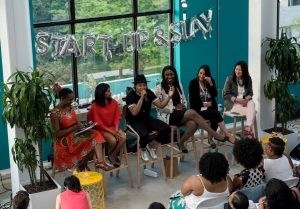
Six diverse entrepreneurs dishing on their six unique journeys creates one inclusive event. Find out what Bee Quammie learned by being there.

Katrina McKay didn’t set out to start an outsourcing business but a desire to create abundance for others led her there.
The post The OPS Collective – One Woman’s Vision, Many People’s Opportunities. appeared first on LiisBeth.
]]>